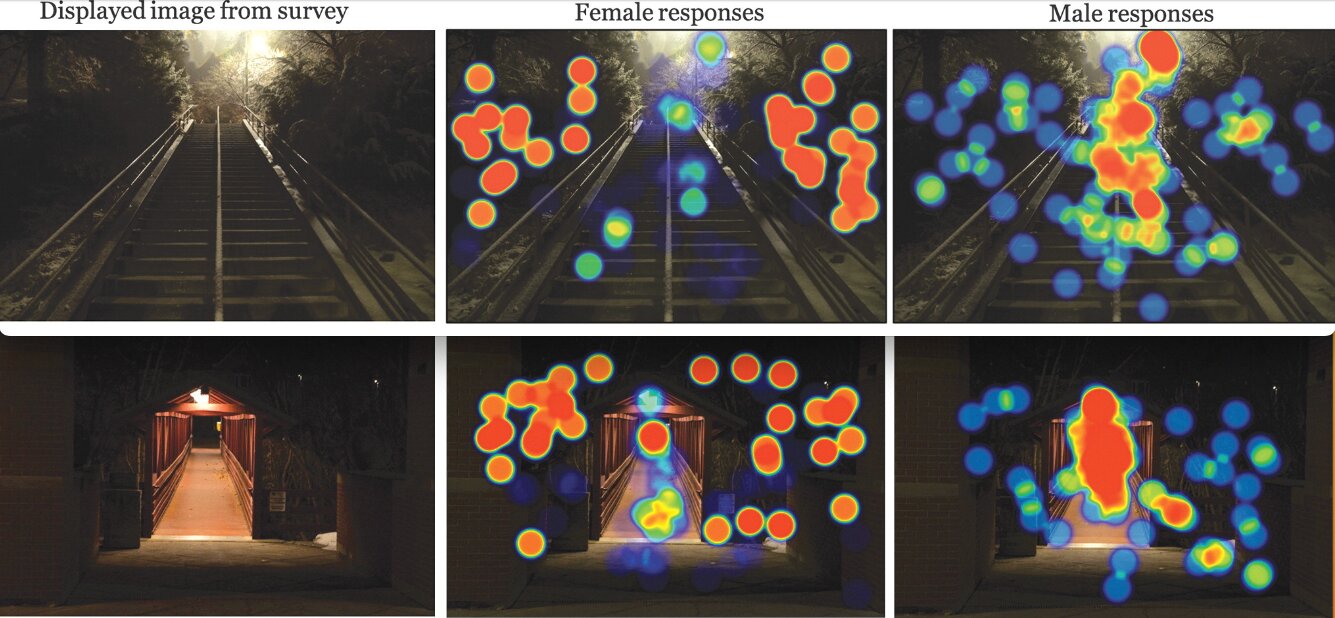An eye-catching new study shows just how different the experience of walking home at night is for women versus men.
The study, led by Brigham Young University public health professor Robbie Chaney, provides clear visual evidence of the constant environmental scanning women conduct as they walk in the dark, a safety consideration the study shows is unique to their experience.



I felt the same. Or better yet, why don’t they film participants in real life walking outside at night and tracking eyeballs and heartbeats and other metrics.
I thought that too, but being at night and unsociable hours makes it a more difficult study to perform, and also difficult to control the conditions. So I can accept the desire to simulate it in a lab setting.
Perhaps ideal would have been a VR experience of walking in a nighttime location, which could have done the eye tracking (VR headsets can do that) and also would be identical every time.
The methodology also allows lots of people to participate (600 in the study). If they had to actually walk outside then it would almost certainly reduce the number of participants they were able to have.
A VR type thing could be good
While it increases the N of the study, I’d say it severely cripples the quality of those results. Sometimes less is actually more.